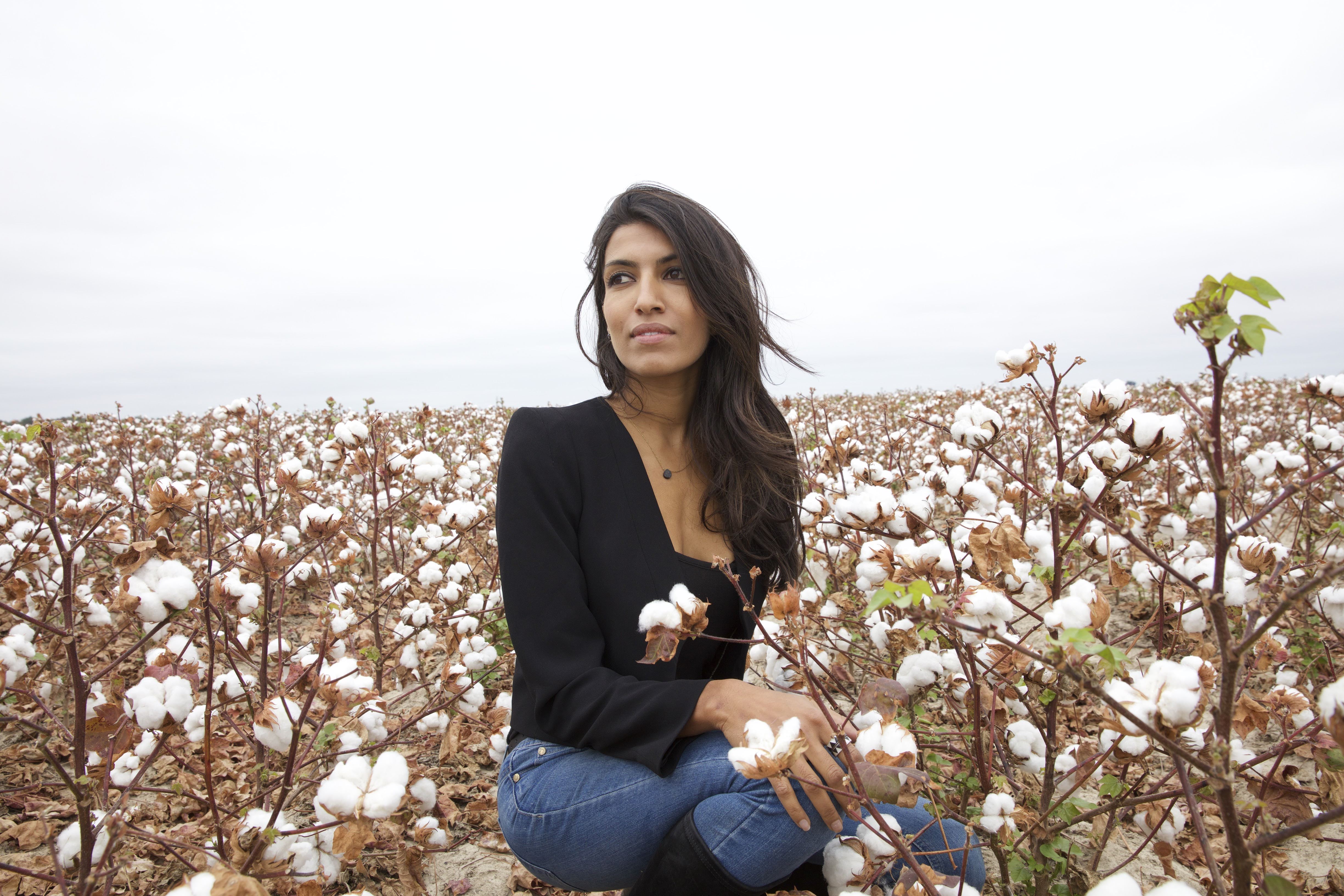Leila Janah isn’t your typical beauty entrepreneur.
Before she started talking about skin care, she built the largest artificial intelligence company in Africa and used it as a vehicle for getting low-income individuals out of poverty via employment opportunities.
So when she stumbled across nilotica—an ingredient she refers to as “an heirloom variety of shea butter”—she recognized a similar opportunity.
Women in Uganda had been slathering the oil on their own skin and their babies for ages. There wasn’t much of a market to sell it, however, and the trees that produce the nut (which is pressed into oil) were threatened by locals who cut them down to sell charcoal.

Janah saw a solution: She could introduce the rest of the world to the skin-care benefits of the plant while providing income to local, low-income women and saving the trees. LXMI (pronounced Lakshmi, like the Hindu goddess) was born in 2016, and the brand now sells an entire line of clean skin-care products formulated with nilotica.
“It’s a new definition of luxury based on the beauty of shared prosperity,” she says.
We asked her more about the skin-saving benefits of nilotica and her big-picture mission.
How do you describe nilotica, and why is it a beneficial beauty ingredient? It’s much more buttery than traditional shea. It has more fatty acids and unique phytochemicals that are unknown outside of the region. It’s moisturizing and is filled with vitamins like A and C. People have been using it locally for millennia. It’s just a simple pressing process that yields this beautiful butter. The women in northern Uganda are said to have the most beautiful skin, and they slather it all over themselves their whole lives. The use it on babies; they call it smearing, rubbing it into infant skin. The region is very sunny, it’s close to the equator. These women are outside working in the fields. They do this work all day outside in the sun and still have amazing skin, and they credit that to nilotica.
RELATED: These are the 4 Main Factors That Lead to Skin Damage
You were struck by the skin-care potential, but what convinced you the business could have a deeper impact? The trees take 20 years to mature. They yield a bright green fruit that tastes kind of like a lychee, and then inside the fruit is a shiny nut, and then inside the nut is the kernel, and that kernel is what’s pressed. They’re harvested once a year, but in the meantime, locals used to cut the trees down to make charcoal. By creating a high-end export market, people can make more money keeping the trees alive than chopping them down. You’re paying living wages to the women who harvest, and it’s also a powerful incentive to not cut down the trees. Our main supplier has worked with the government to ban the cutting down of nilotica trees. That came about because of the demand, and they can now provide livelihoods for women and their families.
What’s next for LXMI? Since we launched, we’ve more than doubled in size. We’re getting a lot more demand for the products, and I think we’ll continue on that trajectory next year. Part of the challenge we face is that most people think plants are less effective in skin care. People don’t realize that some of the most powerful cures for diseases [come from plants]. We’re just starting to scratch the surface of the plant world. What we’re really about is harnessing rare plant power, not just nilotica but all of these plants that have been overlooked and that have not only a powerful skin-care benefit, but that also help the planet and the people harvesting them. It’s 2018, we shouldn’t have to choose between helping people and buying a product that works. Every luxury product should do something good, and “non-toxic” isn’t a benefit. Of course it shouldn’t be harming you; that should be the default. On top of that, what is it doing for you?
(Photos: LXMI)